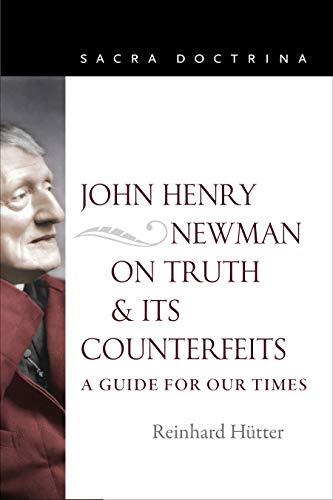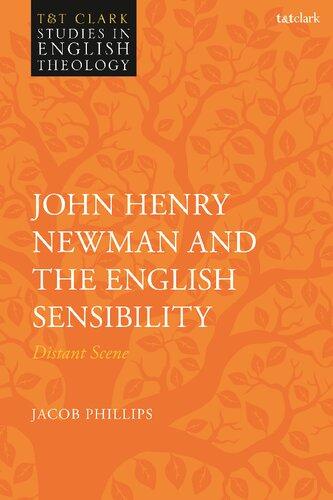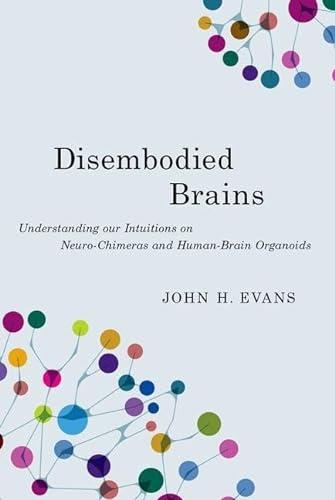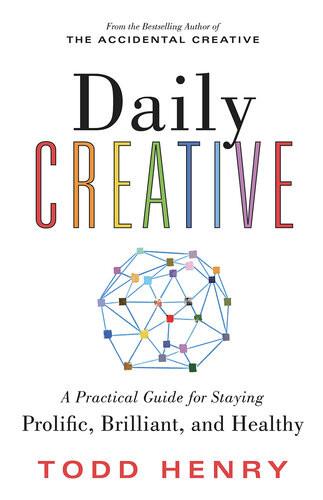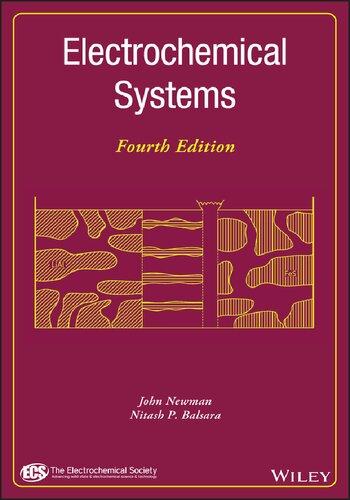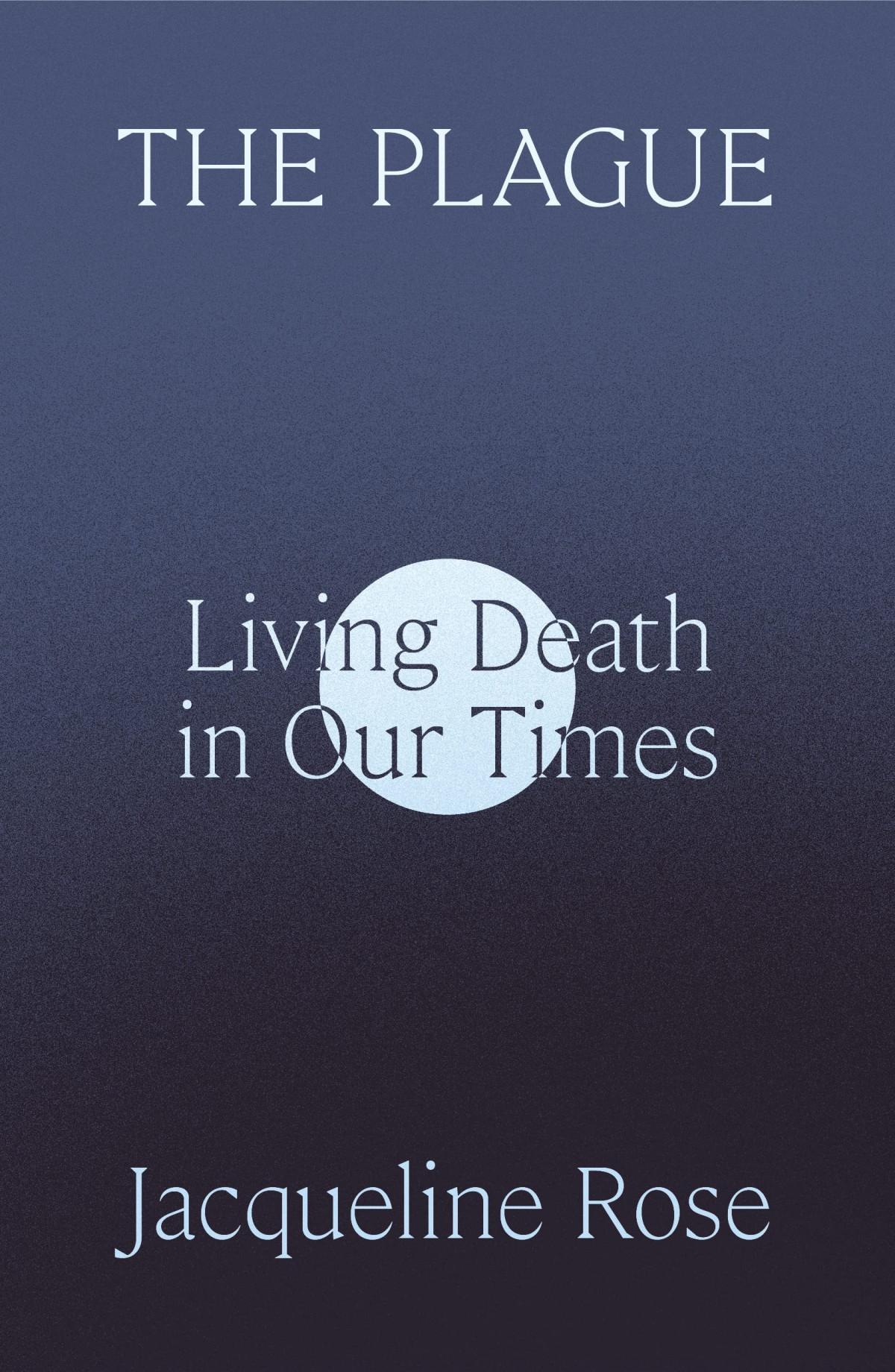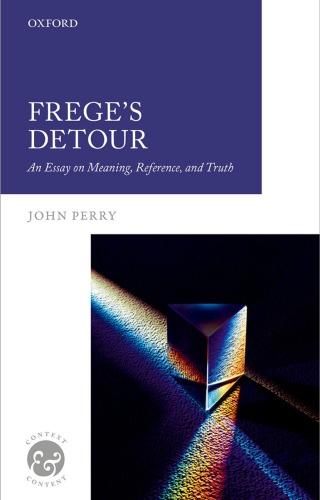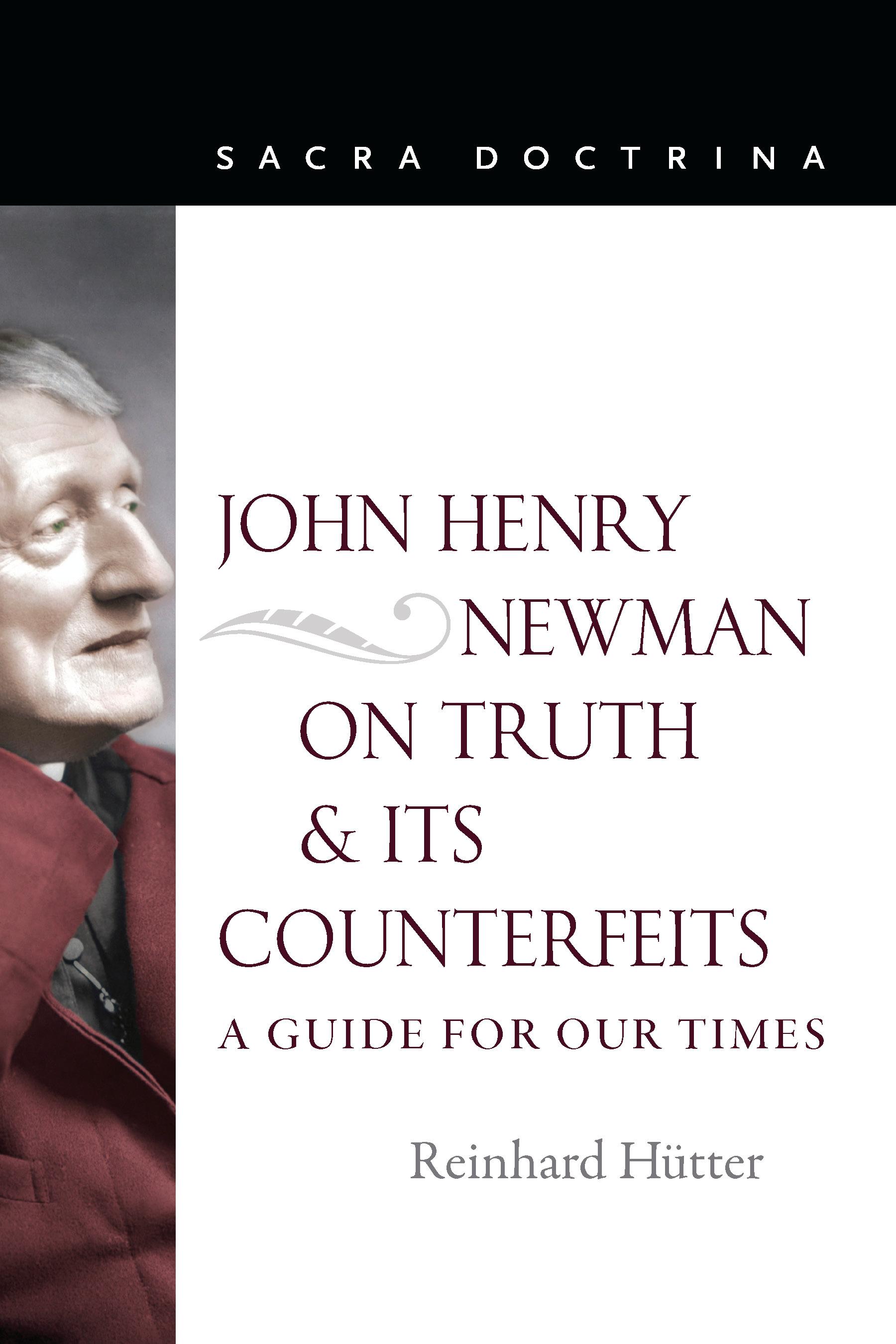JOHN HENRY NEWMAN ON TRUTH & ITS COUNTERFEITS
A Guide for Our Times
Reinhard Hütter
The Catholic University of America Press Washington, D.C.
Copyright © 2020
The Catholic University of America Press
All rights reserved.
The paper used in this publication meets the minimum requirements of American National Standards for Information Science—Permanence of Paper for Printed Library Materials, ANSI Z39.48-1984.
Library of Congress Cataloging-in-Publication Data
Names: Hütter, Reinhard, 1958– author.
Title: John Henry Newman on truth and its counterfeits : a guide for our times / Reinhard Hütter.
Description: Washington : The Catholic University of America Press, 2020. | Series: Sacra doctrina | Includes bibliographical references and index.
Identifiers: LCCN 2019048956 | ISBN 9780813232324 (paperback) | ISBN 9780813232331 (ebook)
Subjects: LCSH : Newman, John Henry, 1801–1890. | Catholic Church Doctrines.
Classification: LCC BX4705.N5 H78 2020 | DDC 230/.2092—dc23
LC record available at https://lccn.loc.gov/2019048956
In memoriam
Don J. Briel (1947–2018)
1. Conscience and Its Counterfeit
2. Faith and Its Counterfeit
3. The Development of Doctrine and Its Counterfeits
4. The University and Its Counterfeit
Preface
Preface
Preface
This book has grown over the course of numerous years and in the context of many conversations with friends and colleagues. I would like to record my thanks especially to Jaime Antúnez Aldunate, Nicanor Austriaco, OP, Christopher O. Blum, Talbot Brewer, Giuseppe Butera, Carlos Casanova Guerra, Fernando María Cavaller, Romanus Cessario, OP, Mark Clark, Paul Connor, OP, John F. Crosby, Joseph E. Davis, David DeLio, Michael Gorman, Paul J. Griffiths, Raymond F. Hain IV, Joseph Henchey, CSS, Judith Heyhoe, Nancy Heitzenrater Hütter, Matthew Levering, Guy Mansini, OSB, Bruce D. Marshall, Andrew Meszaros, Michael Pakaluk, Thomas Pfau, Rodrigo Polanco, R. R. Reno, Philip Rolnick, Michael Root, Richard Schenk, OP, Mary Katherine Tillman, Luca Tuninetti, Candace A. Vogler, and Thomas Joseph White, OP.
It has been a privilege to work with Mary Tonkinson and Paul Higgins in their judicious editing of the text. Special thanks go to David L. Augustine and Meghan Duke for their competent editorial assistance, and to David L. Augustine for preparing and Vincent Birch for completing the indexes. I am indebted to two anonymous peer reviewers for their helpful criticisms, corrections, and suggestions. I thank the editors of Chicago Studies and Nova et Vetera (English edition) for granting me permission to reprint material that is included here.
Earlier versions of the first three chapters were delivered as Paluch Chair Lectures at the University of Our Lady of the Lake/Mundelein Seminary during my 2015–16 tenure there as the Chester and Margaret Paluch Chair of Theology. I would like to express my gratitude for this intellectu-
ally stimulating and spiritually rewarding appointment to the then-rector and now-bishop Robert Barron, who invited me to the university, and to Rector John Kartje and Dean Thomas A. Baima for their warm welcome. My thanks also to the university faculty and staff for their cordial hospitality, to the STL and STD students, as well as Patricia Pintado-Murphy for a stimulating graduate seminar on John Henry Newman’s Oxford University Sermons and Grammar of Assent, and to Matthew and Joy Levering for the gift of their friendship.
I dedicate this book to the memory of Don J. Briel. A noted Newman scholar and passionate Newman disciple, Don Briel founded the Catholic Studies Program at the University of St. Thomas in St. Paul, Minnesota, in 1993, and in 1997 he founded the journal Logos: A Journal of Catholic Thought and Culture. From August 2014 until his death in 2018, he held the Blessed John Henry Newman Chair of Liberal Arts at the University of Mary in Bismarck, North Dakota. Don Briel had a keen and evergrowing awareness of John Henry Newman’s importance for our own day and age. Nourished spiritually and intellectually by John Henry Newman, Don Briel succeeded at nothing less than creating, despite the formidable cultural challenges of the late twentieth and early twenty-first centuries, the “idea of a university” that animated his great spiritual mentor. Over the course of the past generation, no one in the United States has done more than Don Briel to realize John Henry Newman’s theological and pedagogical vision of Catholic higher education.
x Preface
a cknowle D gment S a ckno wledgments
Acknowledgments
Earlier versions of chapter 1 were presented in 2012 at Providence College as the Randall Chair Lecture, at New York University, and at a First Things seminar; in 2014 at the Lumen Christi Institute at the University of Chicago and at Blackfriars, Oxford University; in 2015 as the Paluch Chair Lecture for the University of Our Lady of the Lake/Mundelein Seminary at the Chicago University Club and at the Universidad de los Andes, Santiago, Chile; in 2017 at the Oratorian Community of St. Philip Neri in Washington, D.C., and at the Franciscan University of Steubenville, Ohio; and in 2018 at George Mason University in Fairfax, Virginia. An extended version was published in Nova et Vetera (English edition) 12, no. 3 (2014): 701–67; and a briefer version appeared in Chicago Studies 55, no. 2 (2016): 43–66.
An earlier version of chapter 2 was delivered in 2015 as the Paluch Chair Lecture at the University of Our Lady of the Lake/Mundelein Seminary; as a Lumen Christi Institute Lecture at the University of Chicago; and at the Pontificia Universidad Católica de Chile, Santiago, Chile. It was published in Chicago Studies 55, no. 2 (2016): 9–42.
An earlier version of chapter 3 was presented in 2016 as the Paluch Chair Lecture at the University of Our Lady of the Lake/Mundelein Seminary and at the University of Virginia. It was published in Chicago Studies 55, no. 3 (2016): 80–107.
Earlier versions of chapter 4 were presented as lectures in 2013 at New York University; in 2015 at the Pontificia Universidad Católica de Chile, Santiago, Chile; in 2017 at Harvard University; and in 2018 at the Uni-
versity of Virginia and again at New York University. An extended version was published in Nova et Vetera (English edition) 11, no. 4 (2013): 1017–56. A briefer version appeared in English in Acta Philosophica: Rivista internationale di filosofia 22, no. 2 (2013): 235–56; and in Spanish in Humanitas: Revista de Antropología y Cultura Cristianas 72 (Spring 2013): 752–75.
The epilogue draws on my article “Relinquishing the Principle of Private Judgment in Matters of Divine Truth: A Protestant Theologian’s Journey into the Catholic Church,” Nova et Vetera (English edition) 9, no. 4 (2011): 865–81.
xii a cknowle D gment S
a bbre viation S
a bbreviations
Abbreviations
Works by John Henry Newman
Abbreviations for the works of John Henry Newman follow the conventions established in Joseph Rickaby, SJ, Index to the Works of John Henry Cardinal Newman (London: Longmans, Green, and Co., 1914). Quotations from Newman’s works here follow the Longmans Uniform Edition, the text of which is available online in the Newman Reader (newmanreader.org/works/index.html ) maintained by the National Institute for Newman Studies (NINS).
Diff. (i–ii) Certain Difficulties Felt by Anglicans in Catholic Teaching
Dev. An Essay on the Development of Christian Doctrine
G.A. An Essay in Aid of a Grammar of Assent
Idea The Idea of a University
L.D. The Letters and Diaries of John Henry Newman
Mix. Discourses to Mixed Congregations
Works by Other Authors
PL Patrologiae Cursus Completus: Series Latina (ed. J.-P. Migne)
Sent. Thomas Aquinas, Scriptum super libros Sententiarum magistri
Petri Lombardi episcopi Parisiensis
ST Thomas Aquinas, Summa theologiae
JOHN HENRY NEWMAN ON TRUTH AND ITS COUNTERFEITS
Prologue: n ewman and u s
Prologue: n ewman an D uS
} PROLOGUE
Newman and Us
John Henry Newman, England’s greatest theologian of the nineteenth century, was an assiduous student and exemplary translator of the Church Fathers, East and West; an exquisite preacher; a brilliant rhetorician and controversialist; an astute logician; and an exceptional composer of prayers, hymns, and meditations. Yet most relevant to our present purposes, this imperial intellect was a connoisseur and astute theological critic of a profoundly problematic predicament common to both his day and our own. It is for this reason, first and foremost, that Newman can speak to us as if he were our contemporary.
Newman uses three related terms to characterize various aspects of this shared predicament: the spirit of liberalism in religion, the usurpation of religion and faith by rationalism, and the unfettered rule of the principle of private judgment in religion. Newman expected that this predicament would eventually usher in an age of unbelief ruled by the spirit of infidelity. In 1873, at the opening of the St. Bernard’s Seminary in the diocese of Birmingham, he made the following prophetic remarks in a homily entitled “The Infidelity of the Future”:
I am speaking of evils, which in their intensity and breadth are peculiar to these times. But I have not yet spoken of the root of all these falsehoods—the root as
it ever has been, but hidden; but in this age exposed to view and unblushingly avowed—I mean, that spirit of infidelity itself which I began by referring to as the great evil of our times. . The elementary proposition of this new philosophy which is now so threatening is this—that in all things we must go by reason, in nothing by faith, that things are known and are to be received so far as they can be proved. Its advocates say, all other knowledge has proof—why should religion be an exception? . . . Why should not that method which has done so much in physics, avail also as regards that higher knowledge which the world has believed it had gained through revelation? There is no revelation from above. There is no exercise of faith. Seeing and proving is the only ground for believing. They go on to say, that since proof admits of degrees, a demonstration can hardly be had except in mathematics; we never can have simple knowledge; truths are only probably such. So that faith is a mistake in two ways. First, because it usurps the place of reason, and secondly because it implies an absolute assent to doctrines, and is dogmatic, which absolute assent is irrational. Accordingly you will find, certainly in the future, nay more, even now, even now, that the writers and thinkers of the day do not even believe there is a God.1
In order to realize that Newman is describing the age we live in, one need not read Feuerbach’s Essence of Christianity, Dostoevsky’s Demons, Nietzsche’s The Antichrist and Ecce Homo, or Sartre’s Being and Nothingness—let alone works by the recent “new atheists” Dawkins, Dennett, Hitchens, and Harris.2
1. John Henry Newman, Sermon 9, “The Infidelity of the Future: Opening of St. Bernard’s Seminary, October 2, 1873,” in John Henry Newman, Faith and Prejudice and Other Sermons, ed. Birmingham Oratory (New York: Sheed and Ward, 1956), 123–24.
2. Ludwig Feuerbach, The Essence of Christianity, trans. George Eliot (Mineola, N.Y.: Dover, 2008); Fyodor Dostoevsky, Demons, trans. Robert A. Maguire (New York: Penguin Classics, 2008); Friedrich Nietzsche, The Anti-Christ, Ecce Homo, Twilight of the Idols and Other Writings, ed. Aaron Ridley and Judith Norman, trans. Judith Norman (Cambridge: Cambridge University Press, 2005); Jean-Paul Sartre, Being and Nothingness: An Essay on Phenomenological Ontology, trans. Hazel Barnes (New York: Philosophical Library, 1956); Richard Dawkins, The God Delusion (Boston: Houghton Mifflin, 2006); Daniel Dennett, Breaking the Spell: Religion as a Natural Phenomenon (New York: Penguin, 2006); Christopher Hitchens, God is Not Great: How Religion Poisons Everything (New York: Twelve, 2007); Sam Harris, The End of Faith: Religion, Terror, and the Future of Reason (New York: Norton, 2004). The most comprehensive and profound philosophical analysis of atheism is still Cornelio Fabro, God in Exile: Modern Atheism from Its Roots in the Cartesian Cogito to the Present Day, ed. and trans. Arthur Gibson (Westminster, Md.: Newman Press, 1968). For a clear and incisive philosophical critique of the arguments made by Dawkins, Dennett, Hitchins, and Harris, see Edward Feser, The Last Superstition: A Refutation of the New Atheism (South Bend, Ind.: St. Augustine’s Press, 2008).
More than a century later, in the final homily he gave in 2005 before becoming Pope Benedict XVI, Cardinal Joseph Ratzinger famously characterized this predicament as the “dictatorship of relativism that does not recognize anything as definitive and whose ultimate goal consists solely of one’s own ego and desires.”3 It is this—the emergence, establishment, and exaltation of the sovereign subject—that Newman saw commencing and our age sees completed. In his Confessions, St. Augustine might very well have used the following words to praise God: “In the beginning is you, in the middle is you, and in the end is you.” Yet nowadays a tea company celebrates with these very words the consumer as the sovereign subject, as the center of a sovereignly constructed world of meaning with as many parallel worlds of meaning as there are sovereign subjects. What the tea-company logo expresses in three brief phrases, Supreme Court Justice Anthony Kennedy felt moved to render in misplaced metaphysical terms in Planned Parenthood vs. Casey: “At the heart of liberty is the right to define one’s own concept of existence, of meaning, of the universe, and of the mystery of human life.” The liberty endorsed in these words is nothing but the unfettered autonomy of the sovereign subject, the ruling selfimage of the present age.
The theological program that the spirit of liberalism in religion sets in motion consists in the infusion of the Christian faith with the era’s prevailing self-image and the consequent reconstruction of the Christian faith’s content in light of this new self-image. In his famous “Biglietto Speech,” delivered in 1879 in Rome on the occasion of his appointment as cardinal, Newman stated that the unifying theme of his career had been his consistent opposition to “the spirit of liberalism in religion.” Because the matter Newman addresses has now become a predominant reality, this crucial passage from the “Biglietto Speech” is worth citing in full:
I rejoice to say, to one great mischief I have from the first opposed myself. For thirty, forty, fifty years I have resisted to the best of my powers the spirit of Liberalism in religion. Never did Holy Church need champions against it more sorely than now, when, alas! it is an error overspreading, as a snare, the whole earth;
3. Cardinal Joseph Ratzinger, “Pro Eligendo Romano Pontifice,” Vatican Basilica, April 18, 2005; available at www.vatican.va.
and on this great occasion, when it is natural for one who is in my place to look out upon the world, and upon Holy Church as in it, and upon her future, it will not, I hope, be considered out of place, if I renew the protest against it which I have made so often. Liberalism in religion is the doctrine that there is no positive truth in religion, but that one creed is as good as another, and this is the teaching which is gaining substance and force daily. It is inconsistent with any recognition of any religion, as true. It teaches that all are to be tolerated, for all are matters of opinion. Revealed religion is not a truth, but a sentiment and a taste; not an objective fact, not miraculous; and it is the right of each individual to make it say just what strikes his fancy. Devotion is not necessarily founded on faith. Men may go to Protestant Churches and to Catholic, may get good from both and belong to neither. They may fraternise together in spiritual thoughts and feelings, without having any views at all of doctrines in common, or seeing the need of them. Since, then, religion is so personal a peculiarity and so private a possession, we must of necessity ignore it in the intercourse of man with man. If a man puts on a new religion every morning, what is that to you? It is as impertinent to think about a man’s religion as about his sources of income or his management of his family.4
One characteristic of most if not all versions of theological liberalism since the eighteenth century is the “neo-logist” tendency to reconstruct and repurpose central Christian notions by associating new meanings with traditional words. On the lexical level, the result sounds very much like the received Christian faith; but on the semantic level, the change is dramatic. Differently put, the reconstruction closely resembles the familiar currency, but it is actually a counterfeit meant to accommodate the Christian faith to the normative tenets of Enlightenment modernity and its imperious truth-claims. Keenly identifying counterfeits and replacing them again with the true currency of the Christian faith is one of Newman’s enduring theological contributions.
Yet one of the most subtle strategies for advancing theological liberalism has been to co-opt Newman in such a way that he seems to support—indeed, to legitimize—the very counterfeits produced by the spirit of liberalism in religion that he unmasks and refutes. Not long after New-
4. Quoted from Wilfrid Ward, The Life of John Henry Cardinal Newman Based on His Private Journals and Correspondence (London: Longmans, Green, and Co., 1912), 2:459–62, here 2:460.
4 Prologue: n ewman an D uS
man’s death, liberal Catholic theologians undertook the recurring effort to turn Newman into his own counterfeit by making him support what he actually rejects. What makes Newman vulnerable to being co-opted in such a way is not only his deep awareness of historical existence, which can be easily mistaken for an embrace of modern historicism, but especially his profound personalism, which can be easily misrepresented as an endorsement of modern individualism.5 Yet it is precisely his focus on the concrete reality of the human person, intellectual and existential, that keeps Newman from becoming a mere reactionary to modern times and problems and enables him to identify the counterfeit of the human person, that is, the self-image of the sovereign subject that haunts the modern period.
Newman’s Sojourn “from Shadows and Images into Truth”
John Henry Newman’s life spanned almost the whole of the nineteenth century. He was born on February 21, 1801, and died on August 11, 1890. His reception into the full communion of the Catholic church fell right in the middle of his life, dividing it into Anglican and Catholic periods of about equal length.6 Newman, the eldest of six children, was born in London into a moderately wealthy family. His father was a fairly successful banker until 1814, when his business began to decline so that eventually the elder Newman had to declare bankruptcy. His family belonged to
5. For an astute and lucid discussion of Newman’s personalism, see John F. Crosby, The Personalism of John Henry Newman (Washington, D.C.: The Catholic University of America Press, 2014).
6. The reader interested in Newman’s biography can do no better than to turn to his own Apologia pro Vita Sua (London: Longmans, 1864) for a compellingly rendered and beautifully written account of this most remarkable spiritual and theological sojourn from shadows and images into the truth. For an excellent account, written from the scholarly perspective of the historian, see Ian Ker’s John Henry Newman: A Biography (Oxford: Oxford University Press, 1988) and for a fuller account of the Catholic period of Newman’s life, see Ward, Life of Newman. For the best introduction to Newman’s theology, see Avery Cardinal Dulles, SJ, John Henry Newman (London: Continuum, 2002). Dulles also provides a commendably concise account of Newman’s life. In the following summary, which is indebted to Dulles’s presentation, I will limit myself to the bare outline of Newman’s life and will highlight only those events that have a special bearing on his journey into Catholicism and the central concerns of this book.
the Church of England, regularly attending services on Sunday and saying prayers at meals. But, as Newman would later recollect, he had no formal religious convictions until he was fifteen. In 1808, the seven-year-old John Henry was sent to Ealing, a boarding school near London, where Latin, literature, and mathematics formed the core of the curriculum. As an adolescent, he began to read the works of Enlightenment authors—Thomas Paine, David Hume, and Voltaire—and subsequently began to entertain religious doubts. After a serious illness Newman underwent a profound conversion to the Christian faith. It was so definite an experience that even decades later he was still able to recollect that it began on August 1 and ended on December 21, 1816. The human instrument of his conversion was Rev. Walter Mayers, a clergyman and master at Ealing. Under his influence Newman’s initial religious outlook took the form of a pronounced evangelicalism of a Calvinist bent.
In June 1817, at the age of sixteen, Newman went up to Trinity College, Oxford, where he read the Greek and Latin classics and advanced considerably in higher mathematics. He became an enthusiastic reader of Walter Scott’s novels and began to immerse himself in the works of the philosophers Francis Bacon and John Locke and the historian Edward Gibbon. Newman was a brilliant student, and in December 1820 everyone who knew him at Oxford expected that he would pass his exams with high honors. Newman, however, suffered a nervous breakdown during the exams, managing to pass them but without distinction. Nevertheless, he continued to study intensively and, in April 1822, won a prestigious and extremely competitive fellowship at Oriel College—at that time the most respected and intellectually rigorous college at Oxford.
During his first years as a fellow, Newman was affiliated with a group of remarkable intellectuals known as the “Oriel Noetics.” Their leader, Richard Whately, who was among other things an accomplished logician, trained Newman in Aristotelian logic and began to draw him away from the evangelical Calvinism of his initial conversion toward what Newman would retrospectively characterize as a spirit of intellectualism and liberalism in religion. After just a few years, Newman distanced himself from what he came to regard as the theologically dangerous and spiritually detrimental attitudes endorsed and encouraged by the Oriel Noetics. Yet he
had been part of their inner circle long enough to understand theological intellectualism and liberalism from the inside and was for this very reason later able to diagnose and critique it with the acuity and precision that only intimate familiarity affords.
In 1824, Newman was ordained a deacon, and in 1825 a priest of the Church of England. During the early years of his Anglican ministry, while he served in the parish of St. Clement, Newman came under the influence of Edward Hawkins, another fellow at Oriel College, who introduced Newman to the importance of tradition and of working within the visible church. In 1826, when Newman was appointed a tutor at Oriel College, he also became vicar of the University Church of St. Mary the Virgin. As a tutor at Oriel College and especially as a preacher at St. Mary’s, Newman began to exert a powerful influence over the student body at Oxford.
From the late 1820s onward, Newman was also part of a circle of intellectually brilliant, literarily productive, and ecclesially active High Church Anglicans that included John Keble, Edward Pusey, and Richard Hurrell Froude. Keble obtained for Newman from Germany a scholarly Greek and Latin edition of the Church Fathers, and beginning in 1827, Newman immersed himself in a systematic study of their writings that issued in his first monograph, published in 1833, The Arians of the Fourth Century.
In 1832, after submitting the manuscript to the publisher, Newman undertook what turned out to be a critically important voyage to the Mediterranean with his close friend Richard Hurrell Froude and Froude’s father. They visited Malta, Greece, Corfu, Naples, and Rome. When the time came to return to England, Newman decided to stay behind and explore the island of Sicily on his own. At the very heart of Sicily, he caught what appeared to be typhoid fever and almost died. The weeks of struggling with the deadly fever and of slow recovery were a spiritually intense and crucial time in Newman’s life. While awaiting a ship in Palermo, he had unexpectedly positive experiences in Catholic churches and began to be drawn to Catholicism. Two things are important to keep in mind when one considers Newman’s inaugural encounter with Italian Catholicism: first, Englishmen of the nineteenth century by and large detested what they considered the superstition and squalor of Italian Catholicism;
second, Anglicanism itself—whether in its Low Church or High Church instantiation—was intensely anti-Catholic. So was the young John Henry Newman. During his time in Sicily and especially in Palermo, Newman overcame the first impediment; and in the years between 1833 and 1845, the year of his conversion, he overcame the second.
Newman returned to Oxford in the summer of 1833 just in time to join what eventually came to be known as the Oxford Movement. Initially, Keble, Pusey, Froude, and Newman fought two principal enemies: theological liberalism—that is, the intrusion of Enlightenment rationalism into the Christian faith—and the Erastianism characteristic of the Anglican establishment—that is, the complete political dependence of the Church of England on the civil government. Yet after only a brief period, they undertook a much wider agenda, namely, to reclaim the Catholic roots of the Church of England and to rid the latter of its Protestant traits. The Oxford Movement depicted Anglicanism as the via media between Continental Protestantism and Roman Catholicism. Newman gave the via media its theological justification in his 1836 Lectures on the Prophetical Office of the Church.
As a result of his extraordinary success as a preacher, in the course of the late 1830s, Newman acquired an extensive and ebullient following among Oxford students, who congregated in ever-growing numbers in the University Church of St. Mary the Virgin to hear his sermons, which would later be published in the best-selling Parochial and Plain Sermons. Through them and his writings, primarily his contributions to the Tracts of the Times, Newman became a nationally recognized figure, celebrated by some, notorious to others. A series of widely distributed pamphlets, launched in 1833 and written chiefly by Newman, Keble, and Pusey, the Tracts of the Times were the principal weapon of struggle for the Oxford Movement. Because the Tracts were its main literary output, the movement was also called “Tractarianism.” Several of Newman’s tracts gave Low Church as well as High Church opponents of the Oxford Movement a welcome opportunity to publicly accuse Newman, and with him the whole movement, of gravitating toward Roman Catholicism. The opponents of Tractarianism rested their case mainly on Tract 75, which focused on the Latin Breviary; Tract 85, which focused on scripture in
relation to the Catholic creed; and especially Tract 90. In Tract 90, published in February 1841, Newman attempted to prove that the Thirtynine Articles of Religion—the theologically normative articles of faith in the Church of England, an uneven amalgam of Lutheran and Reformed theology—admitted of a Catholic interpretation. Although Newman continued to differ in Tract 90 with the Catholic stance on issues such as transubstantiation, the veneration of the Virgin Mary, the invocation of the saints, and the teaching on Purgatory, he did defend the teachings of the Council of Trent on the Mass and on the Eucharistic sacrifice.
Tract 90 unleashed a storm of opposition and censure from the bishops of the Church of England and from the heads of Oxford colleges. Overnight, Newman turned from a national celebrity into a universal persona non grata. Newman suspended the Tracts and withdrew to the village of Littlemore, right outside Oxford. There he lived with a few like-minded friends, observing a strict monastic life of prayer, study, and work. In the seclusion of Littlemore, Newman continued his studies of the Church Fathers, and in 1842 he published Select Treatises of St. Athanasius in two volumes. Over the course of his immersion in the Church Fathers, he gradually came to the realization that the via media had been all along a mere mental construct of his own, a nonexistent “paper church.” In September 1843, suspecting that Catholicism might be the one true faith after all, Newman resigned from his post as vicar of St. Mary’s Church.
Newman preached the last of his Oxford University Sermons in February 1843. Its topic was the development of doctrine. The longest and most elaborate of his university sermons, this sermon displays Newman’s incipient realization that doctrine does in fact develop as the church’s understanding of all aspects of the truth, implicit in the apostolic deposit, continually grows under the guidance of the Holy Spirit. Newman felt that now only one important issue was left for him to find clarity on. The Church of England acknowledged the early ecumenical councils that produced the Nicene Creed and the Christological dogma of Chalcedon. These were legitimate and authentic instances of what was implicit in the New Testament being made explicit in the Trinitarian and Christological dogmas. But what about later developments in the Catholic church— were they corruptions, as the Church of England claimed, or were they,
too, legitimate and authentic developments of doctrine, as Catholicism maintained? Newman searched for a criterion that would permit him to discern true developments from false ones. For Newman this became a decisive question, the answer to which was essential for discerning his future path.
Newman confronted this question in his famous Essay on the Development of Christian Doctrine, which he composed in 1844–45. While writing this book, he came to the realization that Catholic doctrines, such as papal primacy and Purgatory, as well as Catholic pious practices, such as the veneration of the Virgin Mary and the invocation of the saints, had developed from the tradition of the early church in an organic and logical way. Tridentine Catholicism—the Catholicism of the sixteenth-century Catholic Reform—was indeed the true successor to the doctrinal faith of the Church Fathers. As soon as he arrives at this critical insight, Newman brings his manuscript to a rather abrupt close with an appeal directly addressed to the reader:
Such were the thoughts concerning the “Blessed Vision of Peace,” of one whose long-continued petition had been that the Most Merciful would not despise the work of His own Hands, nor leave him to himself;—while yet his eyes were dim, and his breast laden, and he could but employ Reason in the things of Faith. And now, dear Reader, time is short, eternity is long. Put not from you what you have here found; regard it not as mere matter of present controversy; set not out resolved to refute it, and looking about for the best way of doing so; seduce not yourself with the imagination that it comes of disappointment, or disgust, or restlessness, or wounded feeling, or undue sensibility, or other weakness. Wrap not yourself round in the associations of years past, nor determine that to be truth which you wish to be so, nor make an idol of cherished anticipations. Time is short, eternity is long.
NUNC DIMITTIS SERVUM TUUM, DOMINE, SECUNDUM VERBUM TUUM IN PACE:
QUIA VIDERUNT OCULI MEI SALUTARE TUUM. THE END. 7
7. John Henry Newman, An Essay on the Development of Christian Doctrine [1845], ed. Stanley L. Jaki (Pinckney, Mich.: Real View Books, 2003), 431.
Prologue: n ewman an D uS
Without further delay, Newman reached out to the Italian Passionist priest, Dominic Barberi, who at the time was doing missionary work in Oxfordshire; after a first general confession that took two days, Newman entered into full communion with the Catholic church on October 9, 1845.
With this momentous step, the narrative dynamic of Newman’s life has reached a decisive climax: he used his own private judgment in religion in order “ultimately to supersede it,” “as a man out of doors uses a lamp in a dark night and puts it out when he gets home.”8 His act of assent to the Catholic faith and, with it, to the church’s authority entailed the simultaneous renunciation of the principle of private judgment in matters of divine truth. Having found his way from shadows and images back to the light the truth of the Catholic faith afforded, Newman saw that the light of his own private judgment had become superfluous, indeed, counterproductive.
In September 1846, Newman went to Rome to study at the College of the Propaganda (now the Pontifical Urban University) in preparation for the priesthood in the Catholic church. During his time in Rome Newman drew up plans for establishing an English Oratory in the spirit of St. Philip Neri, who in the sixteenth century had founded the Congregation of the Oratory in Rome and who, due to his extraordinary impact as a preacher, confessor, and spiritual director, has been called the “third apostle of Rome” after the apostles Peter and Paul. Following Newman’s return to England in December 1847, he was appointed superior of the new oratory, which he moved in 1849 from Maryvale to Birmingham and finally, in 1852, to the Birmingham suburb of Edgebaston.
Not long after the Oratorians had arrived in Birmingham, in September 1850, Pope Pius IX restored the Catholic hierarchy in England. This event triggered a rather violent outbreak across England of “no-Popery,” which Newman regarded as his duty publicly to denounce. In the summer of 1851, he produced and delivered at the Oratory his most fiercely polemical work, a set of Lectures on the Present Position of Catholics in England, in which he relentlessly exposed and definitively debunked the
8. Ian Ker, John Henry Newman: A Biography (Oxford: Oxford University Press, 1988), 335.
most notorious contemporary prejudices against as well as stereotypes about the Catholic church.
In April 1851, Newman’s famous “Catholic University” episode began and, because of it, his association with Dublin, Ireland. It was then that Archbishop Paul Cullen of Armagh invited Newman to establish a Catholic University of Ireland. To make a long story short: due to insurmountable conflicts among the Irish bishops, ongoing difficulties in finding professors, and the persistent lack of an appropriate student body in Ireland, the endeavor failed to meet the initial rather high expectations of the archbishop and other members of the Irish Catholic hierarchy. After at last being installed officially as rector in June 1854, Newman resigned in February 1858. While this episode was definitely taxing for Newman, it provided the occasion for one of his most famous works, The Idea of a University. The book contains nine of the ten lectures that Newman originally composed—only five of which he publicly delivered in Dublin in 1852. The ten lectures were published in early 1853 under the title Discourses on the Scope and Nature of University Education. In 1859, Newman published a related work, Lectures and Essays on University Subjects. Eventually, in 1873, omitting the original fifth discourse, he published edited versions of the remaining nine lectures together with the Lectures and Essays in one volume under the title The Idea of a University. In this version, the book has become the single most important and still-unsurpassed work penned about the university in the modern period, a brilliant presentation of the classical vision of a liberal education, complemented and completed by the light that divine revelation affords.
The span of years from 1855 to 1865 were probably the most difficult of Newman’s life as a Catholic. Things came to a head in the early 1860s, when the rumor spread that Newman, disappointed by his experiences in the Catholic church, was ready to return to the Church of England. A particularly insidious attack offered him the opportunity to demonstrate his unequivocal allegiance to the Roman Catholic church. In January 1864, the Protestant novelist Charles Kingsley published an article in which he claimed that Newman—and with him most other Catholic priests—had little if any regard for truth. Newman demanded a public retraction from Kingsley. As a public apology was not forthcoming, Newman composed
in rapid succession a weekly series of seven pamphlets that were published between April 21 and June 2, 1864, and received wide acclaim. In the following year Newman decided to republish these pamphlets as a history of his religious opinions. He omitted two explicitly controversial and directly polemical pamphlets and issued the remaining five under the title Apologia pro Vita Sua. Together with Augustine’s Confessions and Thérèse of Lisieux’s Story of a Soul, the Apologia ranks among the most important Catholic spiritual autobiographies. After the publication of the Apologia in 1865, Newman became again a national celebrity, highly esteemed by Anglicans as well as Catholics.
In the summer of 1866, Newman went on a well-deserved vacation to Switzerland. During this journey he conceived the central idea and the rough outline of his Essay in Aid of a Grammar of Assent, which was eventually published in 1870. This book is Newman’s most developed and exacting presentation of his epistemology and psychology of belief in general and of faith in particular. In this conceptually demanding work, Newman brings to surpassing fruition the examination of faith and reason begun in his Oxford University Sermons.
Just as Newman was finishing the Essay in Aid of a Grammar of Assent, the First Vatican Council convened and the dogma of papal infallibility was promulgated. In 1874, England’s former prime minister William E. Gladstone published an attack on the conciliar decrees. Urged on by many friends, Newman defended Pius IX and the Vatican Council against Gladstone’s attack. In his Letter to the Duke of Norfolk, Newman articulated his mature view of conscience and advanced a balanced, sober, and consistently minimalist interpretation of the First Vatican Council’s dogma of papal infallibility.
At this late point in his life, Newman began to receive numerous tributes. In 1878 he was created an honorary fellow of Trinity College, Oxford, the first person ever to receive this honor. On May 12, 1879, Newman was created a cardinal by Pope Leo XIII. The last years of Newman’s life were marked by the afflictions characteristic of old age and failing health, counterbalanced by his undiminished serenity of spirit and deep personal faith. Newman died in the Birmingham Oratory on August 11, 1890. His
